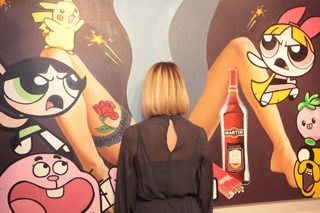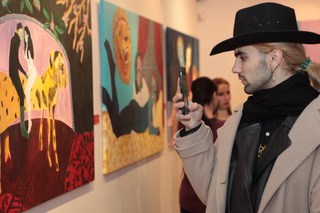Being a fairly young democracy, Ukraine has already managed to make a unique contribution to world art: their artists are exhibited all over the world, and Ukrainian galleries and museums always have rich programs. Here, I am going to take a look at how the art market of the country of 27 different regions, looks like from the inside.
Let us start from this: there is a Ukrainian art market, but at the same time there is none. As Myroslava Hartmond, Managing Director of Triptych: Global Arts Workshop, Kiev notes: “The Ukrainian art market before the epidemic resembled a bonsai tree: a miniature copy of an adult tree, where there were all the constituent elements (artists, galleries, museums, auction houses and even collectors, etc.), and even it had its own certain harmony, but there was no power at all”.

Triptych_ Global Arts Workshop, Kiev
Triptych_ Global Arts Workshop, Kiev
To increase that power, one should start with increasing the number of museums, galleries and projects: at the moment, the creation of private museums and galleries is a popular undertaking in Ukraine. Furthermore, in Ukraine there is no National Museum of Contemporary Art – normally a calling card for any country’s artistic circle. This causes a lack of a state-level platform for showcasing the works of the best Ukrainian artists to the world. The importance of state funds in developing projects and cultural institutions, as well as effecting change in the educational system should not be overlooked. Ukrainian Cultural Foundation is the only public fund in Ukraine and therefore the cultural component of the country does not have the proper development ability. One of the key art institutions in Ukraine, the PinchukArtCentre is sponsored by one source only – its founder, Victor Pinchuk. Meanwhile, the Visual Culture Research Center, engaged in exhibition and publishing activities, scientific research and public educational events, receives its funding from European foundations, organizations, and their representative offices in Ukraine. Then, the main financial source for the Shcherbenko Art Centre is the income produced through sales of books and works of Ukrainian artists, as well as proceeds from the rental of rooms for lectures, presentations, and workshops.
The Western art market is enormous, with extremely high numbers of purchases and investments being the norm. Any investment is, in turn, a business, and investment in culture is a method for profits that has been tested for centuries. If the Ukrainian government began to invest in art, the country’s economic opportunities would increase. Under the current circumstances, when there is a lack of public funding in art, many Ukrainian artists are exhibited abroad, which entails the loss of foreign investments in the Ukrainian art market. As the Ukrainian artist Andrei Bludov points out: “Although the topic is quite complex and confusing, it contains a lot of darkness and false information. On the one hand, there is some development, first of all, the emergence of new institutions, players and, let’s say, agents. On the other hand, the Ukrainian art market is an integral part of the economy as a whole, i.e. there is a decrease in activity and prices. It is a hidden reality, but the demonstrative side generates success, it is such a style, part of the profession. Some auctions were cancelled, but a couple were hold, but the results are not very clear, rumored to be not very good. Sales in galleries came to naught, or almost. Artists sometimes talk about deals in the workshop, which are often rare. Before the epidemic, a lot of things happened abroad, now, obviously, everything was paused”.

Noch Artist-run Space, Odessa
With regard to the state of the Ukrainian art market during the epidemic, it is undergoing changes: “As it seems to us, activity has dropped almost to zero. There are a couple of large institutions that continue to do part of their projects online, but these are usually lectures and workshops. Many grant projects have been stopped or even cancelled due to lack of funding. Everyone is in anticipation of what will happen after the pandemic. We did not lose heart and launched an online exhibition, which was also a virus for the online platform. I think it was our reaction to events in the world and the desire not to stop activity” says Harry Kraevets, co-founder of Noch Artist-run Space in Odessa. Thus, during the epidemic the art market of Ukraine is subordinated to the influence of the new media technologies that help maintain contact with all its members.
There is no doubt that the state’s priority should be the development of culture, for instance in the form of investments in new funds, state museums, and galleries. By modifying the approach to asset in culture, the government would support not only all the agents operating in the art market, but also increase its own profit resources. So, let us hope the relationship between the state sand the Ukrainian art market, filled with talented artists, will change.

Noch Artist-run Space, Odessa







